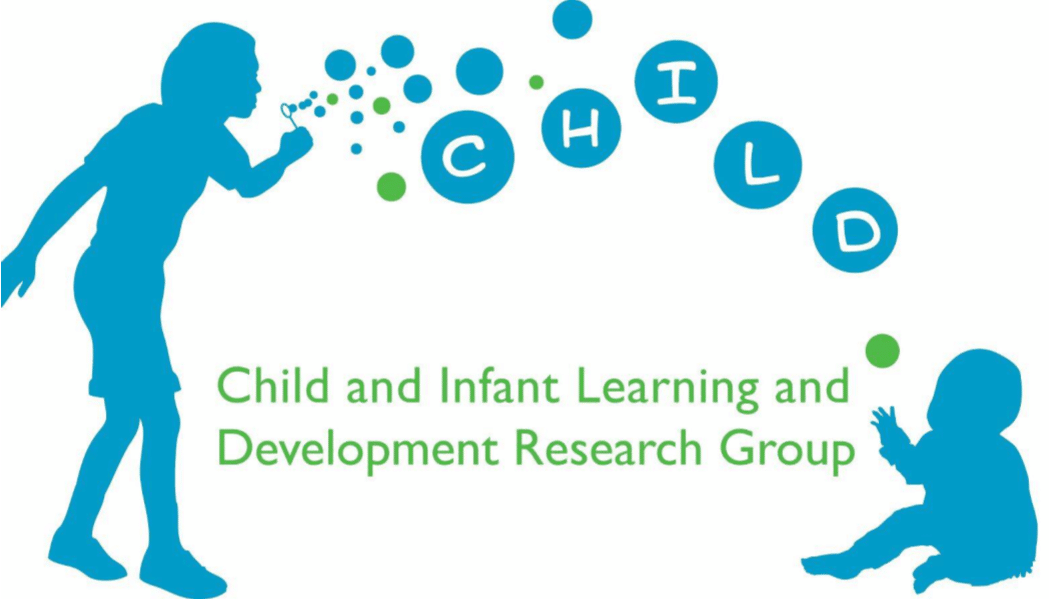
Eye-tracking: A Glimpse into a Child’s Mind
By Elizabeth Morin-Lessard & Yomna Waly
Conducting research with children can be a challenge. Compared to adults, children have a smaller range of motor abilities, shorter attention spans, and their speaking abilities are still developing. Thus, we cannot have children fill out questionnaires or point to objects in the same way that an adult can.
In the Language and Cognitive Development Lab at the University of Calgary, our research team harnesses the power of children’s gaze to understand how children learn language. While children’s motor abilities like walking or pointing are still developing, they can easily move their eyes in response to a picture or to a sound. Children’s ability to look at objects in their environment allows us to use an eye-tracker as a tool to investigate how they understand language and study how their language abilities develop.
What is an eye-tracker?
An eye-tracker is a small sensor device that monitors where a participant is looking. In research with children, an eye-tracker can provide insight into where a child’s attention lies and their moment-to-moment reactions to various visual and auditory cues. In our lab, we use a small tabletop eye-tracker that allows children to have unrestricted head movement. We place it between the child and a large screen where images of interest are displayed. A computer then collects all the child’s looking information, including pupil and gaze data. This data tells us where they are looking on the screen and for how long. Once we have collected this data, we can extract and analyze it to get a glimpse into children’s unspoken thought processes and language development.
I’ve signed my child up for an eye-tracking study. What does a typical eye-tracking study look like?
Great! Once you have signed up for a study, you will receive details about the location of the Language and Cognitive Development Lab. Once you are in the lab, you will be directed to a playroom where your child will have a chance to play with toys and get comfortable with their surroundings. During this time, the researcher will discuss the details of the study with you, before going to the eye-tracking room.
Once in the eye-tracking room, your child will sit on a small chair facing a large TV screen in front of which there is an eye-tracker on a stand (see picture below). Our studies are usually presented as games, and children quite enjoy them! For all studies, your child will first see a dot move on the screen and will be asked to follow it with their eyes. This step is called ‘calibration’ and it allows the eye-tracker to determine exactly where your child is looking with a high degree of accuracy.

Calibration screen before the eye-tracking study begins. The eye-tracker sits on a stand between the child and the TV screen.
Once the calibration step is done, the study will begin. Usually, your child will hear a series of sentences while looking at pictures on the screen. For some studies, we have the parent watch their child participate in the study from an adjacent room through a one-way mirror. This is important because we want to get your child’s natural reactions to our study with minimal outside influence.

Study in action showing pictures on the TV screen.
Once the study is done, we’ll have a mini celebration of your child’s participation in our study. Our research team will congratulate your child and give them a small gift and a ‘Child Scientist’ diploma with their name on it for participating in the study.
Eye-tracking is a valuable tool in child research. As language researchers, it allows us to assess children’s real-time responses to speech and audio input. In the Language and Cognitive Development Lab, eye-tracking studies are fun for children and a great way for your child to get involved with research and become a ‘Child Scientist’!
Can my child participate in an eye-tracking study?
If you and your child are interested in taking part in our studies or would like more information, feel free to contact our research coordinator at [email protected] or visit our website. We look forward to seeing you soon!
References:
Eye-tracking in infant and child research:
https://www.tobiipro.com/applications/scientific-research/infant-child-research/
Infant eyes: a window on cognitive development:
https://www.ncbi.nlm.nih.gov/pmc/articles/PMC3259733/
About the Authors:
- Elizabeth Morin-Lessard has a Ph.D. in Psychology, and is currently a Postdoctoral Research Associate in the Language and Cognitive Development Lab. She studies language and cognitive development, with a focus on bilingualism, speech hesitations, and gestures.
- Yomna Waly has a B.Sc. Honours in Psychology, and is currently a Research Assistant in the Language and Cognitive Development Lab. Her research interests focus on children’s understanding of emotions in speech.

